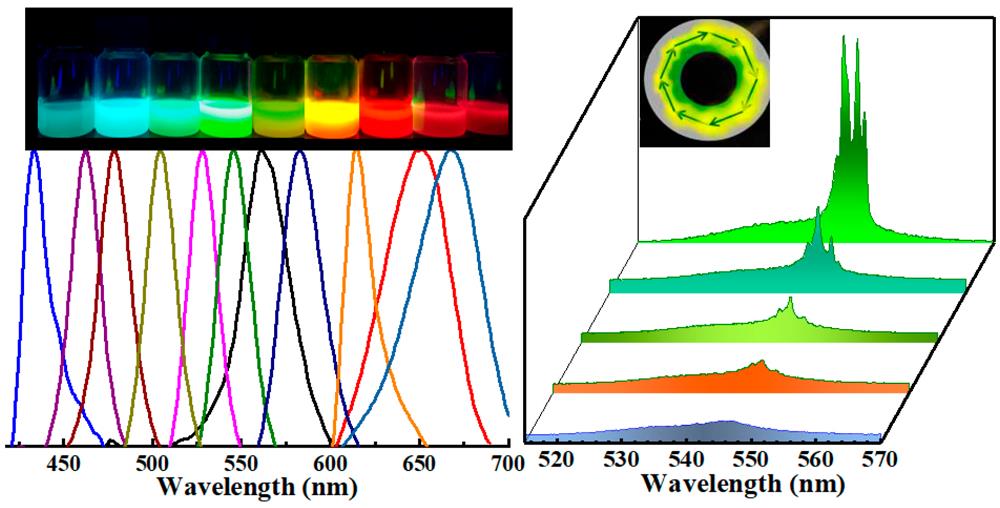Formamidinium (FA) perovskites have exhibited outstanding optoelectronic properties in efficient solar cells and light-emitting diodes. However, their development on nanolaser application has rarely been explored, especially the up-conversion lasing performance.
Recently, a collaborative research team from Shanghai Institute of Optics and Fine Mechanics (SIOM) of the Chinese Academy of Sciences (CAS) and Chongqing University has succeeded in obtaining two-photon pumped lasing from colloidal FA-perovskite nanocrystals (NCs) at room temperature. This work was published in ACS Photonics.
In the experiment, researcher prepared the FA-perovskite NCs as gain medium by a simple ligand-assisted reprecipitation strategy. These colloidal FAPbX3 NCs exhibited tunable bright emission (from 433 to 667 nm) through halide exchange. Simultaneously, by tuning the ratio of the surface organic ligands, the morphology of FAPbBr3 NCs could be transferred from quantum dots to nanoplatelets, and consequently, the emission spectra were also tuned in 520-542 nm.
Subsequently, they demonstrated the excellent nonlinear characteristic of NCs. A large two-photon absorption coefficient (0.76 cm/GW) and high optical net gain (480 cm-1) were achieved, suggesting that FAPbX3 NCs could be regarded as an excellent optical gain medium.
Furthermore, the low-threshold amplified spontaneous emission (ASE) under both two- and one-photon excitations was observed. The temperature-dependent ASE action revealed the strong temperature-tolerant ASE action with a high characteristic temperature of 308 K, indicating the weak requirements of heat management of FA-based devices. Finally, FAPbBr3 NCs were coupled into a hollow capillary tube. Stable two-photon excited whispering-gallery-mode lasing was successfully achieved with a low threshold of ~310 μJ/cm2.
These findings suggest that FAPbX3 NCs can act as promising gain media for high-performance upconverted nanolasers toward optoelectronic application.
This research was supported by the Strategic Priority Research Program of CAS and the National Natural Science Foundation of China.

Tunable photoluminescence and lasing spectra from FAPbX3 NCs. (Image by SIOM)
Article website:
Contact:
Mr. CAO Yong
General Administrative Office
Shanghai Institute of Optics and Fine Mechanics, CAS
Email: caoyong@siom.ac.cn
